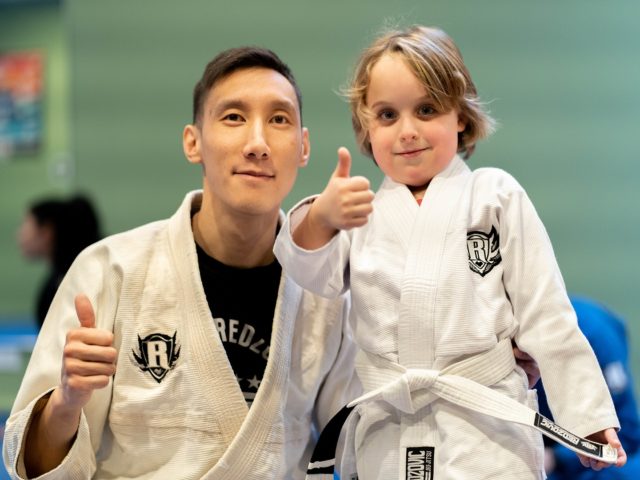BRAZILIAN JIU JITSU
How martial arts can help your child
Martial arts require intense mental and physical engagement, which taps into a child’s need to be immersed in an activity. Martial arts also provide positive role models, clear directions, rules, and peer interaction. Martial arts are especially beneficial for kids with autism and ADHD. The activity enables them to:
- Build social and teamwork skills
- Engage in a sport
- Improve self-control
Brazilian Jiu Jitsu
Brazilian Jiu Jitsu is today’s fastest growing martial art. Originating from Japan and made popular by the Gracie family from Brazil, Jiu Jitsu is a ground-based self-defense that is designed to defeat a larger and stronger opponent using proper technique and leverage.
How Jiu Jitsu differs from Karate and Taekwondo
Translated as the “gentle art,” “Jiu” in Japanese means “soft, gentle, or yielding.” This is meant to distinguish Jiu Jitsu from “hard” styles of martial arts, such as Karate or Taekwondo where hitting the opponent is basically the only option. Unlike traditional martial arts, Jiu Jitsu teaches how to de-escalate a situation without causing injury. If ever faced with aggression from a bully, a child with Jiu Jitsu experience can neutralize the situation by taking the person to the ground without hitting or punching.
Why Jiu Jitsu is so effective with children with self-regulation challenges
Practicing Jiu Jitsu can seem like a game to kids as they’re on the floor trying to gain a dominant position during sparring, also known as “live rolling.”
- Ground-based grappling and close contact
- Children are more comfortable crawling on the floor rather than standing up which makes its introduction easier
- With their interest in sensory and physical play, children love to grapple due to the weight pressure and sensory stimulation. It also helps students become comfortable with physical touch and is a great starting point for socializing with peers.
- Self-control and peer interaction
- Grappling in close contact pushes students to improve their body awareness and regulate their movements and emotions
- Jiu Jitsu emphasizes back-and-forth interaction. Students must constantly anticipate, react and counter with his/her training partner.
- Striking Free
- Unlike traditional martial arts such as Karate and Taekwondo, Jiu Jitsu is taught without emphasizing on striking (punching and kicking)
Class structure
Warm up
Each session begins with a warm up where kids loosen up and mentally prepare for the session.
Learning Jiu Jitsu Techniques
During each session, one or two techniques are taught working with a training partner (another kid or coach). During this time kids help each other practice a technique while becoming better aware of their own strength and movement.
Live Rolling (sparring)
During sparring, two students compete for a dominant position. With safety rules and no striking involved, injury is very unlikely. The process of live rolling teaches kids to push themselves physically and mentally while controlling their emotions.
Game Time
Sessions conclude with play time which is everyone’s favorite part of class. This gives kids incentive to perform well during class because they’ll be given more time to play with teammates afterwards.
